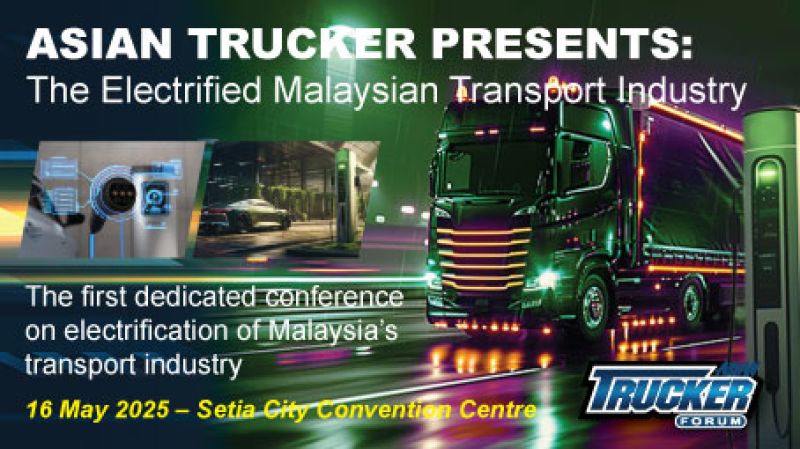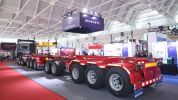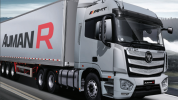Asian Trucker Forum: The Electrified Malaysian Transport Industry, Part 2: Charging Infrastructure

Without any energy source, no truck will move. ICE (Internal Combustion Engines) use Diesel or Petrol as energy carrier. Electric trucks use batteries, which need to be charged with electricity. To electrify transportation, charging infrastructure needs to be put in place. The charging infrastructure for electric heavy-duty trucks is a critical component in the broader shift to decarbonize the transportation sector, but it comes with significant challenges and opportunities. These are the key aspects:
Available Technology for Charging Electric Heavy-Duty Trucks
The current state of the art technology includes high-powered direct current (DC) fast chargers, with power levels ranging from 150 kW to 350 kW and beyond. These chargers can significantly reduce charging time but require robust electrical infrastructure to support the higher power demands. When planning for the replacement of ICE-powered trucks with electric trucks, a charging point serving multiple trucks needs to have sufficient capacity to charge a number of trucks simultaneously.
The Megawatt Charging System (MCS) is currently under development. The MCS standard aims to deliver up to 3.75 MW of power, reducing charging times for large electric trucks to less than an hour. MCS is designed specifically for heavy-duty long-haul trucks that need rapid recharging at fleet depots or rest stops.
Where operators have mixed fleets, they are typically deploying dedicated depot charging stations. Meant for overnight charging, they are typically using Level 2 chargers (AC charging at 240V), which deliver up to 22 kW. While this is slower than fast charging, it’s suitable for trucks that operate on a daily schedule with long rest periods. Such set up is ideal for operations where the trucks cover little distances during the day and will return to the depot at the end of a shift.
Although less common, battery swapping technology, where the entire battery pack is replaced at a service station, is being considered by some companies for quick turnaround times. A number of innovators are currently developing swappable fuel cells too.
Challenges in Charging Infrastructure
Electric heavy-duty trucks require substantial amounts of electricity. Charging a single truck can consume as much electricity as a small commercial building, especially when using fast or ultra-fast chargers. This places a significant load on local power grids, particularly if many trucks need to charge simultaneously.
Many areas, especially in rural regions or along major highways, may not have sufficient grid capacity to support multiple high-powered charging stations. Upgrading the grid to support fast chargers for heavy-duty vehicles is costly and time-consuming.
In particular heavy-duty trucks typically have long routes, and reducing downtime for charging is essential. Although fast charging can help reduce time, it still takes longer than refuelling with diesel, which presents logistical challenges for long-haul trucking companies. The number of chargers available as well as the space needed to park during charging are current challenges for infrastructure providers.
Installing charging stations for large trucks requires significantly more space compared to passenger vehicles, not only for the chargers themselves but also for truck parking, manoeuvring, and waiting areas. This can be particularly challenging in densely populated urban areas.
The industry is still developing standardized charging connectors, especially for ultra-high-power charging (e.g., the MCS standard). Without common standards, it becomes more difficult for manufacturers, fleet operators, and charging providers to collaborate effectively. Several truck manufacturers have formed joint ventures to make an orchestrated effort to create an ecosystem that allows electric trucks to operate beyond brand-restricted limitations.
Opportunities in Charging Infrastructure
The shift toward electric trucks presents an opportunity to integrate renewable energy into charging infrastructure. Solar panels, wind turbines, and energy storage systems (ESS) can be deployed at charging stations to supply clean energy and alleviate some of the demand on the grid. This also aligns with sustainability goals for reducing overall emissions from the trucking sector.
Smart grid technologies and demand response systems can help balance the load on the grid. By optimizing when, where and how trucks charge—perhaps during periods of low electricity demand or high renewable generation—energy companies and fleet operators can reduce peak load issues and make charging more efficient.
Deploying large-scale battery energy storage systems (BESS) at charging stations could mitigate grid constraints. These batteries can store energy during off-peak hours and release it when trucks need to charge, smoothing out the demand curve and reducing strain on the local grid.
Fleet operators can optimize their use of electric trucks by planning routes that account for charging stops, using data to predict energy consumption, and taking advantage of depot charging when trucks are idle for extended periods.
Constraints in Accessing Electricity
In some areas, especially in rural regions or along highways where trucking routes are prevalent, the grid infrastructure may be outdated or lacks the capacity to support high-powered charging. Expanding and upgrading the electrical grid in these locations is expensive and takes time, which delays the deployment of charging stations.
The cost of electricity can vary significantly by region and time of day. High demand periods can result in expensive charging for fleets, which might reduce the economic advantages of switching to electric trucks. Moreover, the cost of installing and maintaining high-power charging stations can be substantial, especially in remote locations. Fuel subsidies are an aspect that can impact the decision-making process for electric vehicles as well.
There are currently far fewer charging stations for heavy-duty trucks than for passenger vehicles, and long-haul truck drivers may struggle to find a charging station along their routes. This is particularly challenging for long-distance trucking, where downtime due to charging could impact delivery schedules and efficiency.
Conclusion
While the charging infrastructure for electric heavy-duty trucks is advancing rapidly, it faces significant challenges related to grid capacity, cost, and availability. At the same time, there are considerable opportunities to integrate renewable energy, develop smart charging solutions, and innovate with high-powered technologies like the Megawatt Charging System.
The transition to electric heavy-duty trucks will require not just advancements in vehicle technology but also substantial investments in infrastructure and electrical grid upgrades to support the heavy loads these vehicles demand. Collaborative efforts between governments, energy providers, truck manufacturers, and fleet operators will be key to overcoming these challenges.
Electrifying Malaysia’s Transportation
Asian Trucker is organising the Asian Trucker Forum, an upcoming conference dedicated to the evolving landscape of electric trucks and buses. As a leader in the industry, your company plays a pivotal role in shaping the future of sustainable transportation. We would like to invite you to become a sponsor for this significant event.
Event Overview:
- Date: 16 May 2025
- Venue: Setia City Convention Centre
- Theme: Pioneering the Future of Transportation
This conference will bring together industry experts, policymakers, and key stakeholders to address the challenges and opportunities presented by the adoption of electric vehicles in the commercial sector. It will be an excellent platform for companies like yours to showcase innovations, share insights, and explore real-world use cases that can serve as valuable learning experiences for others in the industry.









